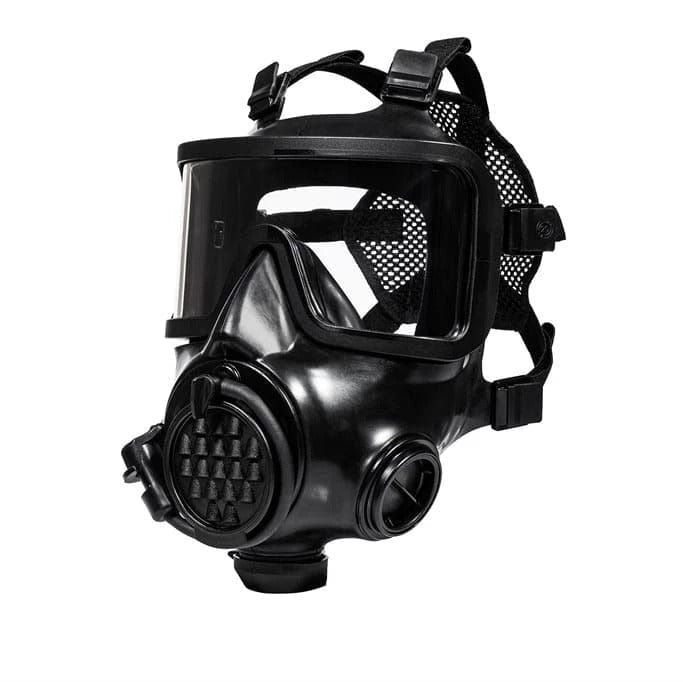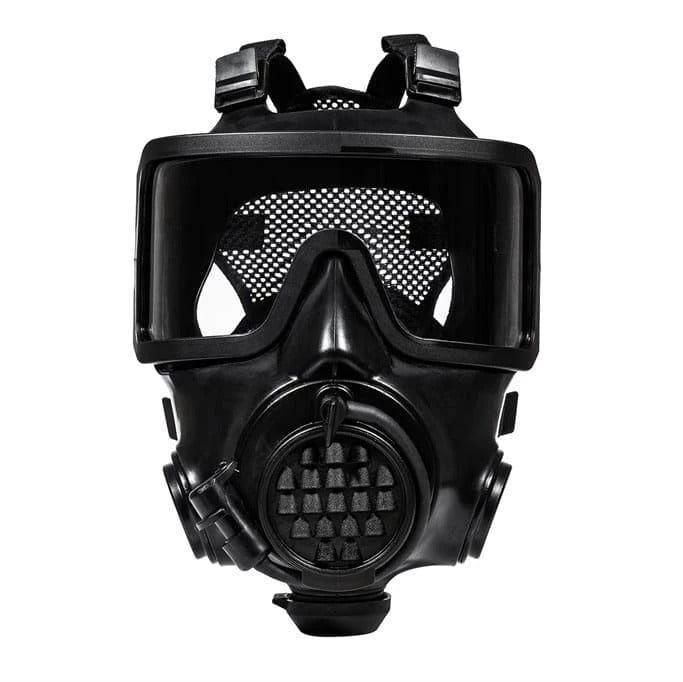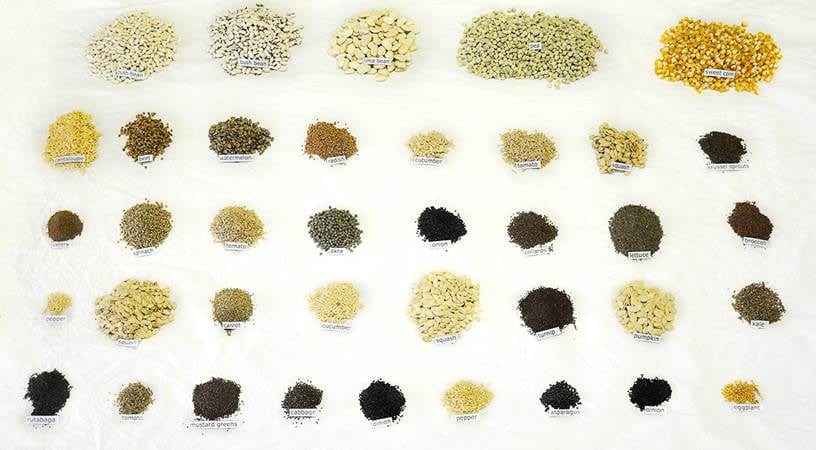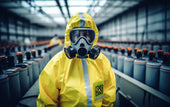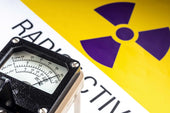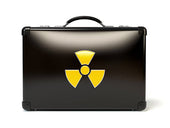Radiation Exposure: Highest Risk in Animal Health
 Ionizing radiation can alter the atoms in living things for the better or worse. It poses a serious health threat by harming tissue and DNA and affecting gene quality.
Ionizing radiation can alter the atoms in living things for the better or worse. It poses a serious health threat by harming tissue and DNA and affecting gene quality.
As such, it can impact genetic material and lead to various diseases. Fortunately, the cells in our bodies can counteract these effects, but only to a certain degree.
On that note, it is important to note that ionizing radiation simply damages a living being, all in all, when its sum gets excessively high. You'd be surprised to know that we are continually inflicted with tiny measures of ionizing radiation that happen normally, and we get along fine and dandy with our lives without being truly harmed by this radiation. However, everything that is too much is hurtful as everything goes on.
While radiation can refer to all types of electromagnetic radiation, including light and radio waves, it's usually used to describe ionizing radiation. High-energy radiation, such as the radiation delivered by the decay of radioactive isotopes, can ionize atoms.
Other types of ionizing radiation include X-rays, gamma rays, and alpha and beta particles. If present at adequate levels, ionizing radiation can damage the health of humans and other animals.
1.1 What is Radiation and Radiation Exposure
Simply put, radiation is energy generated from a source and goes through space at the speed of light. Such energy is denoted by an electric field and a magnetic field related to it and contains wave-like properties. In most cases, it is likewise referred to the radiation as "electromagnetic waves."
On a similar note, radiation is energy that moves starting with one spot and then onto the next in a structure that can be depicted as waves or particles.
As mentioned above, we are exposed to radiation daily with the most recognizable radiation sources, such as the sun, microwaves in our kitchens, and the radios we pay attention to in our vehicles.
The radiation sources mentioned are typically safe, with no significant health risks. However, it is essential because radiation is still radiation.
Radiation generally poses a lower risk at lower doses yet can be associated with higher dangers at higher doses. Depending on the type of radiation, various measures should be taken to safeguard our bodies and the environment from its effects while allowing us to fully utilize its numerous applications.
1.2 The Uses of Radiation
Today, radiation is used to help humanity in medical treatments, academic and scientific applications, industrial operations, and electricity generation. It has also proven useful in agriculture, archaeology (carbon dating), space exploration, law enforcement, and geology (such as mining), among many others.
Medical Treatments
Emergency clinics, doctors, and dental specialists utilize nuclear materials and techniques to analyze, screen, and treat different metabolic cycles and ailments in people. Around seven (7) out of every ten (10) Americans have controlled diagnostic X-rays or radiation therapy. Accordingly, operations utilizing radiation have saved many lives through the diagnosis and treatment of conditions going from hyperthyroidism to bone cancer.
Emergency clinics, doctors, and dental specialists utilize nuclear materials and techniques to analyze, screen, and treat different metabolic cycles and ailments in people. Diagnostic X-rays or radiation therapy have been controlled by around 7 out of every 10 Americans. Accordingly, operations utilizing radiation have saved many lives through the diagnosis and treatment of conditions going from hyperthyroidism to bone cancer.
The most widely recognized of these operations involves using X-rays, which are radiation that can penetrate our skin. When X-rayed, our bones and other bodily structures cast shadows because they are denser than our skin, and those shadows can be distinguished on visual film. Doctors and dental specialists can detect broken bones and dental issues through X-rays.
Likewise, clinics and radiology focus on performing roughly 10 million nuclear medicine procedures in the United States every year. In such methods, doctors direct marginally radioactive substances to patients drawn to specific inside organs like the pancreas, kidney, thyroid, liver, or mind to analyze clinical circumstances.
Academic and Scientific Applications
Formal academic institutions (e.g., universities, colleges, secondary schools, research institutions, scientific institutions, and other knowledge-generating organizations) use nuclear materials in coursework, laboratory exhibitions, experimental research, and various health physics applications. For instance, scientists use radiation to make discoveries about plants, animals, and the world.
Experts use it to determine specific details, such as the types of soil plants used for cultivation, the sizes of oil fields, the tracks of ocean currents, etc. In other cases, researchers use low-energy radioactive sources in gas chromatography to distinguish the components of petroleum products, smog, cigarette smoke, and even complex proteins and enzymes used in medical research.
Industrial Operations
Radiation is disputably most helpful in modern tasks. To give a model, radiation is utilized greatly to produce goods and, surprisingly, in sterilization processes. Likewise, radiation eliminates poisonous contaminations, such as exhaust gases from coal-terminated power stations and industry, which are fundamental in different modern cycles. To represent, electron beam radiation can eliminate hazardous sulfur dioxides and nitrogen oxides from our current circumstance.
With atomic methods in light of radiation, researchers can look at objects from an earlier time or produce materials with unrivaled qualities in, for example, the car industry. Moreover, radiation can treat wastewater or make new plant assortments impervious to environmental change.
1.3 The Different Types of Radiation
-
Nuclear Radioactive Materia
Nuclear radiation (oftentimes referred to as ionizing radiation) is the energy delivered at high velocity by charged particles or electromagnetic waves.
Radiation can come from many sources, both natural and man-made. All living things are continually exposed to low radiation from rocks, sunlight, and cosmic rays or beams.
In parting, nuclear fuel is placed in a reactor center, and the particles that make up the fuel are broken into pieces, delivering energy. The neutrons delivered by one nuclear splitting happen to part different cores, setting off a chain response that produces intensity, radiation, and radioactive side effects.
At high dosages, ionizing radiation can prompt harm to an individual's body, including, at exceptionally high portions, radiation infection and even death in the worst cases.
At lower dosages, ionizing radiation can cause well-being impacts like cardiovascular sickness and cataracts, as well as cancer.
Ultimately, exposure to extremely elevated degrees of radiation, for example, being near a nuclear impact, can cause intense well-being impacts, skin burns, and intense radiation disorder ("radiation ailment"). It can likewise bring about long-haul well-being impacts like malignant growth and cardiovascular illness.
-
Chemical Radiation
Alpha particles are charged particles produced from naturally occurring materials (uranium, thorium, and radium) and man-made components (such as plutonium and americium). They are used (in tiny amounts) in smoke alarms and detectors.
Needless to say, exposure to ionizing radiation makes chemicals harm body tissues and can be destructive. Similarly, as with exposure to any poisonous compound, the human body can endure ionizing radiation to a certain degree without delivering prompt injury.
Furthermore, chemical hazards and harmful substances represent extensive well-being risks (like irritation, refinement, and cancer-causing nature) and physical dangers (like combustibility, erosion, and explosibility).
-
Biological Radiation
Radiation exposure also has biological repercussions. It can harm the entire body (somatic harm), eggs, and sperm (hereditary harm). Its effects are more evident in quickly duplicating cells, such as the stomach lining, hair follicles, bone marrow, and undeveloped organisms.
Therefore, patients going through radiation treatment frequently feel queasy or debilitated in their stomach, lose hair, have bone hurts, etc., and why specific consideration should be taken while going through radiation treatment during pregnancy.
Hereditary impacts and malignant growth are the essential health threats from radiation exposure. The disease would be multiple times more probable than a hereditary impact. Hereditary impacts could incorporate chromosome changes, stillbirths, inherent irregularities, and baby and adolescent mortality.
Additionally, ionizing radiation has been known to harm cell parts such as proteins, lipids, and nucleic acids and to cause DNA double-strand breaks.
A group of DNA materials can prompt cell cycle capture in substantial cells and cause cell passing. Of course, the impacts of radiation rely upon the sort, energy, and area of the radiation source and the length of openness.
1.4 Radiation Damage: Risks and Effects
Certain body parts are explicitly impacted by exposure to various radiation sources. The dose size, the radiation's capacity to harm and/or alter human tissue, and the organs affected further implicate this.
Still and all, the most important factor to consider is the amount of dose as it determines whether the energy deposited in your body is absorbed by cells with potential effects to biological damage.
Hair
Radiation (especially at 200 rems or higher) results in rapid hair loss and clumps.
Brain
Given that brain cells do not reproduce nor duplicate, the probability of them getting harmed directly is low unless exposed to 5,000 rems of radiation or greater. Like the heart, radiation kills nerve cells and little veins and can cause seizures and immediate death.
Thyroid
Ever heard of thyroid cancer? Some body parts are more impacted by exposure to various radiation sources than others.
For one, the thyroid organ (and the thyroid gland) is vulnerable to radioactive sources. Hence, the risk of thyroid cancer.
In adequate sums, radioactive iodine can annihilate all or part of the thyroid gland. However, taking potassium iodide can decrease the impact of openness.
Heart
Extraordinary exposure to radioactive material at 1,000 to 5,000 rems would cause quick harm to little veins and presumably cause cardiovascular disease and abrupt death.
Gastrointestinal Tract & Reproductive Tract
Radiation can also cause gastrointestinal upset and reproductive issues.
Animal Health: Effects of Radiation on Pets
 To concerned pet owners, surely, you have, at some point, wondered about the effects of radiation on pets. Does it generate the same risks and threats as it does to humans? Does it make your little buddy sick? Can it alter the biological makeup of animals as well?
To concerned pet owners, surely, you have, at some point, wondered about the effects of radiation on pets. Does it generate the same risks and threats as it does to humans? Does it make your little buddy sick? Can it alter the biological makeup of animals as well?
You'd be surprised that even the limited quantity of radionuclides may increase animal change rates. Deadly portions of dropout radiations arrive at cities by touching on dirtied lands. Subsequently, the radionuclides enter the metabolic cycle and integrate into DNA atoms in creature cells, causing hereditary harm.
For instance, the trachea is the windpipe in dogs, and the throat is the organ that connects the mouth to the stomach. These organs are covered with mucosa, which is delicate to intense radiation's secondary effects. The mucous layers can become reddened and enlarged, a condition called mucositis.
Ways to Protect Your Pet from Radiation
 Hypothetically speaking, there are nuclear reactor radiation leaks, causing a massive nuclear disaster.
Hypothetically speaking, there are nuclear reactor radiation leaks, causing a massive nuclear disaster.
Of course, in light of this true nuclear emergency, a radioactive fallout may occur, and nuclear reactors may likewise contribute to developing toxicity within your area.
Now, aside from keeping yourself safe, how do you protect your pets from such a nuclear accident, which can pose threats of severe illness?
-
Decontaminate your pet immediately.
As nuclear reactors leak, this public health event requiring immediate action does not exclude animals from its health-related risks.
As soon as it happens, decontaminate your pet with a pet shampoo and soap and rinse it with water completely.
Additionally, to ensure your safety, wear waterproof gloves and a dust mask (or another material to cover your mouth). Protect cuts and scrapes (yours and your pet's) while washing your pet to remove radioactive material from the wounds. -
Use potassium Iodide (KI) to alleviate the effects of absorbing radioactive iodine.
Potassium iodide (KI) is a sort of iodine that isn't radioactive and can assist with blocking one kind of radioactive material, radioactive iodine (I-131), from being consumed by the thyroid. KI works by impeding radioactive iodine from entering the thyroid.
When an individual takes KI, the thyroid consumes steady iodine. This gives instant protection from nuclear disaster for the next twenty-four (24) hours.
Utilizing iodine supplementation or KI oral solution (such as potassium iodide KI and thyroxine tablets) is a good way to combat a radiation emergency and prevent the negative effects of radioactive iodine contamination and decreased normal thyroid function.
-
Seek help at a veterinary specialty center.
When your pet is infected, seek help from a veterinary oncologist immediately, especially if radioactive iodine has fully reached the animal's body. The amount of iodine supplementation sufficient for pets may already be limited.
At this point, your pet may already experience symptoms of allergic reactions, known iodine sensitivity, swollen salivary glands, decreased milk production, and other adverse effects.
-
Refer to the animal poison control center.
Lastly, the contact poison control center provides a hotline for animal poisoning and poisoning.
-
Use a dog respirator.
You may also benefit from an advanced, durable gas mask for many pets and canines. It is specifically engineered to protect your companions from chemical, biological, radiological, and nuclear (CBRN) threats, including hazardous gases and airborne particles.




